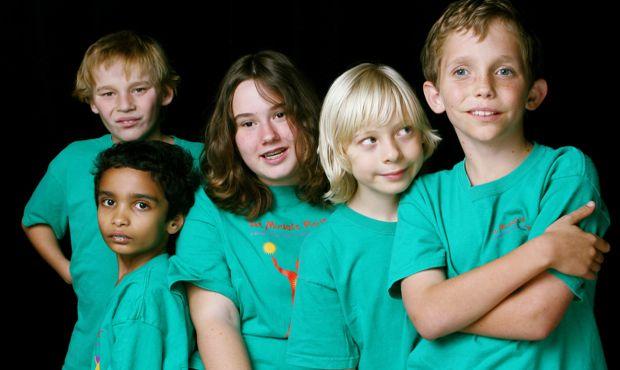Rate of autism diagnoses rises dramatically, cause unknown
Still image from “Autism: The Musical.” (Photo courtesy of Cindy Gold/HBO).
The rate of diagnoses for autism spectrum disorders, including Asperger syndrome, is on the rise.
According to a new report from the Centers for Disease Control and Prevention, the number of children who have received a diagnosis of autism or a related disorder increased 23 percent from 2006 to 2008, and the rate has nearly doubled since national surveys were conducted in 2002.
Benedict Carey, science writer for The New York Times, said these numbers primarily show an increase in diagnoses, not necessarily an increase in prevalence.
“This was a study. The researchers didn’t meet the kids, they were reviewing records and looking at what’s been written in the records. A secondhand ‘diagnosing at a distance,’ so it’s not clear exactly what’s happening,” Carey said.
According to Carey, the diagnosis of autism spectrum disorders has been on the rise for decades. However, researchers cannot definitely say if the escalation is due to an actual increase in the rate of the condition, a change in how it is identified by doctors and parents or perhaps a combination of factors.
One of the challenges facing health providers and families is gauging if and where a child fits on the spectrum of an autism disorder. There is no definitive test to conclusively determine if a child has an autism disorder. Children with an austism disorder display an array of symptoms and behaviors.
“To qualify for the diagnosis, it’s a little bit murky,” Carey said. “It’s a pretty wide spectrum, it goes from very severely disabled kids to kids who are unusual, awkward, have social difficulties.”
Carey said he’s skeptical the report demonstrates a real increase in the rate of autism spectrum disorders. He cites financial support from the government as one of several reasons why families might push for their child to receive an autism diagnosis.
“Any time a very rare condition goes to very common, especially in these young kids, I think you have to be wary about what’s going on,” Carey said.
Dr. Perri Klass, a pediatrician and professor of journalism and pediatrics at New York University, thinks changes to the definition of autism spectrum disorders is part of the puzzle.
“Some of the rise in the number of children diagnosed with autism has definitely had to do with expanding the category and understanding the very high functioning children, the children with Aspergers, as fitting that diagnosis when once they wouldn’t have been considered to fit,” Klass said.
Klass said, though, that there is still room to explore other factors that could be impacting the rise in reported incidence of the disorder.
“We do know that the definition has been changing and we also know that people have been getting much more effective at making the diagnosis. That doesn’t answer the question of whether something else is changing as well,” Klass said.
A study published by the Stanford University School of Medicine in 2011 suggested non-genetic factors play a larger role in determining autism risk than previously thought. According to the study, which looked at 192 sets of twins, 62 percent of autism risk is determined by environmental factors, while only 38 percent is attributed to genes. What those environmental factors are though, is still unknown.
At a press conference following the release of the CDC study, CDC director Thomas Frieden said it is important to research the causes of autism and support families that are affected by the disorder.
“One thing the data tells us with certainty – there are more children and families that need help,” Frieden said. “We must continue to track autism spectrum disorders because this is the information communities need to guide improvements in services to help children.”
